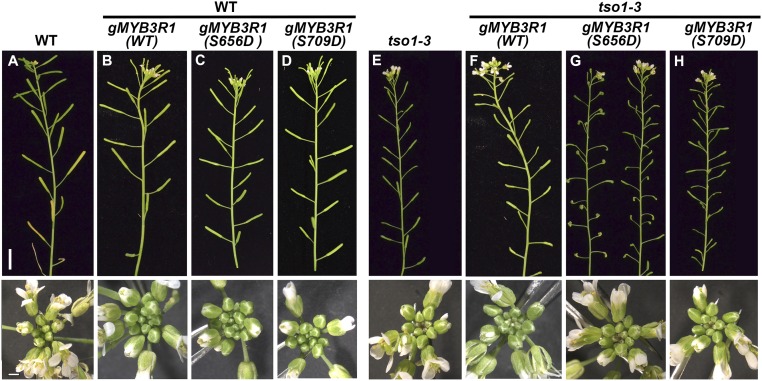Fig. 6.
MYB3R1 phosphomimic S656D enhanced tso1-3 mutant. (A) The main inflorescence of WT (Ler). Lower shows the apex of the inflorescence. (B–D) Different versions of gMYB3R1 transgene constructs transformed into WT plants (genotype tso1-1/+). The specific version of transgene is indicated in parentheses. The main inflorescence shoot of gMYB3R1 (WT) (B), gMYB3R1 (S656D) (C), and gMYB3R1 (S709D) (D) all showed wild-type phenotype. (E) The inflorescence of tso1-3. Note the small silique due to reduced fertility and the minor phyllotaxy defect. (F–H) Different versions of gMYB3R1 transgene constructs transformed into tso1-3 plants. (F) The main inflorescence shoot of tso1-3; gMYB3R1 (WT) plant showing a phenotype that is identical to tso1-3 single mutant. (G) The inflorescence shoots of two transgenic lines of tso1-3; gMYB3R1 (S656D) plants showing a stronger phenotype than tso1-3 single mutants. The siliques did not form properly due to abnormal gynoecium and severely reduced fertility. (H) The inflorescence of a tso1-3; gMYB3R1 (S709D) plant. The phenotype is identical to that of tso1-3. [Scale bars, 1 cm (Upper) and 1 mm (Lower).]

